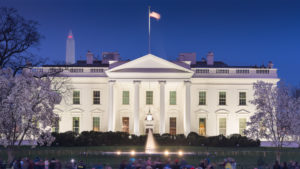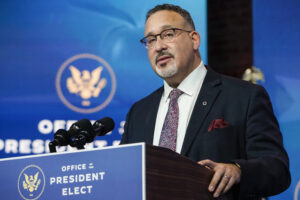The Hill: Biden’s Department of Education begins new war on charter schools

Every parent wants their child to have access to a good education. But it’s no secret that your zip code makes a world of difference. Children in poor urban communities, who are overwhelmingly students of color, don’t have the same opportunities as students from the suburbs. Their public schools often fail them at the most basic levels.
Public charter schools can offer those students a chance at receiving the quality education they deserve.
Research consistently shows that urban charter schools outperform traditional public schools. For instance, in a 2019 study, Stanford University concluded that Pennsylvania’s public charter schools outperformed traditional schools, particularly in urban areas such as Philadelphia. Moreover, the charter schools did a much better job of closing the achievement gap for minority students in urban areas than traditional public schools. Keep in mind that in Philadelphia more than half of all students in public schools are black.
Other urban communities around the country present similar stories. In Chicago, Detroit, New York and Washington, D.C., public charter schools provide a better alternative than public schools, and in each city, they serve large minority populations.
Yet, that hasn’t stopped the Biden administration and the Department of Education from declaring war on the most successful charter schools.
The federal Charter Schools Program helps pay costs to start and expand public charter schools. In 2015, Congress passed a significant expansion to that program with broad bipartisan support. The statute’s purpose was direct — to “provide financial assistance for the planning, program design, and initial implementation of charter schools” in order to “increase the number of high-quality charter schools available to students across the United States.”
To accomplish its goal, the statute obligates the Secretary of Education to distribute hundreds of millions of dollars in grants annually. Congress also must set forth clear criteria guiding awards, such as whether they seek to replicate programs with measurable academic success and have a plan to serve “racially and socioeconomically diverse student bodies.”
Congress appropriated $440 million for the federal charter school program for 2023. But President Biden doesn’t share the bipartisan consensus regarding charter schools. For example, during his campaign he said he is “not a charter school fan.”
Now the Department of Education, which administers the program, has followed Biden’s lead and proposed a rule that is nothing more than an open attack on the grant program. The rule — which allowed only a 35-day comment period and could take effect as early as May — proposed new requirements for grant applicants that are tailor-made to ensure that the most successful charter schools won’t be replicated or expanded.
First, the proposal requires applicants to provide evidence that their charter schools meet “unmet demand” through “over-enrollment of existing public schools.” In other words, applicants must prove that too few existing schools are available for students — not that the existing schools have failed their students.
The problem never has been a lack of space in existing schools. As the department’s own research indicates, charter school enrollment is up and public school enrollment has declined over the past decade. This is because students are departing failing public schools in favor of homeschooling, private schools, and better-performing charter schools.
The new priority sees that as a problem and is designed to make sure that failing public schools remain the only option if there’s space in a failing public school. It therefore targets the most successful charter schools in nearly every major urban area because they have provided a better option to students.
Second, the proposal says that applicants “must propose to collaborate with at least one traditional public school or traditional school district,” and even “provide a letter from each partnering traditional public school or school district demonstrating a commitment to participate in the proposed charter-traditional collaboration.”
This will allow local districts to veto any proposal without a reason. Part of the reason that charter schools thrive is they foster innovation and competition among schools. That also necessarily means that public schools that lose student enrollment to charter schools will be unlikely to voluntarily collaborate or further charter schools’ efforts.
If a failing public school does not want to lose students and the accompanying funding, it will have every incentive to simply withhold collaboration and doom any charter school applicant. That doesn’t serve students who will miss out on educational opportunities. It is yet another means of undermining the grant program in its entirety.
Third, the charter schools would have to show that they would “not hamper, delay, or in any manner negatively affect any desegregation efforts in the public school districts” and “would not otherwise increase racial or socio-economic segregation or isolation in the schools.”
This requirement is an offensive effort to punish charter schools for successfully serving minority students. According to the National Alliance for Public Charter Schools, “[I]n the large majority of states, the race/ethnicity student demographics of charter schools are almost identical to those of the surrounding school district.” And some of the most successful charter schools serve predominantly minority student populations because that accurately reflects the community from which they draw students. The new requirement would consider this impermissible “segregation” or “isolation” of minority students.
That means that applicants can either impose unlawful racial selection criteria to try to balance demographics away from the communities they serve or fail the new criteria. The department’s “Catch-22” is no doubt intentional. By creating an impossible conflict concerning racial demographics, the department can take whichever convenient excuse it wants to deny applicants grants. That means that the grants won’t increase the number of high-quality charter schools, which will deprive children of a better education.
As Pacific Legal Foundation argued to the agency, the new priorities are terrible policy, and they are almost certainly unlawful. The Department of Education can’t deliberately undermine a statute’s plain purpose as it has here. This is particularly so when the statute doesn’t allow the agency to impose additional requirements on applicants beyond the criteria set out by Congress, much less when the resulting criteria implicate unlawful racial discrimination.
During the comment period the department received an unprecedented number of comments — more than 15,000 — even with the abbreviated schedule. Parents, it seems, want what’s best for their children, even if the Biden administration doesn’t. Should the department persist, and attempt to finalize the new requirements, it will certainly face stiff opposition in the courts from those same parents.
This op-ed was originally published by The Hill on April 19, 2022.









